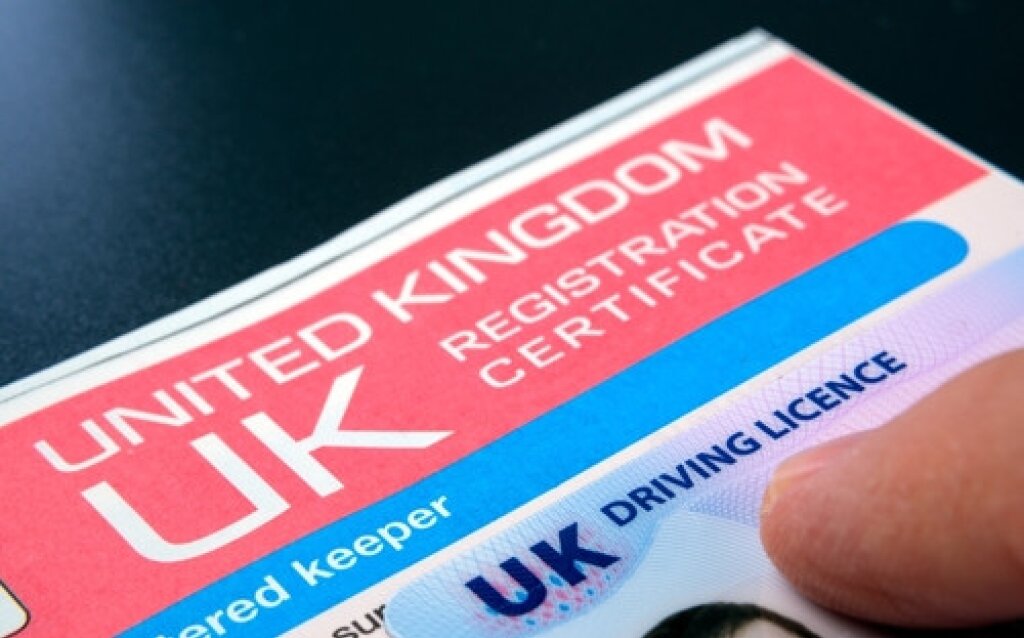The History of Video Redaction from Licence Plates to TikTok Videos
The first time you came across redacted (blurred or masked) information may have been while you were watching a spy film, when chunks of writing were blacked out in a document marked ‘top secret’.
Today, you will undoubtedly have seen many images of cars shown in the press and on television programmes with their number plate license registration details obscured.
The first redaction example, whether fictional or as part of a real-life security project, has to do with protecting national security.
The number plate license redaction example is related to the spread of data protection laws in recent years.
Today, the vast majority of businesses and most people know and understand that when sharing information – be it in the form of documents, photographs, videos or license plates – any personal data has to be blurred, masked or removed.
The case for blurring the license plate of your own car
Before we look at the reasons why the press and organisations such as car park operators are required to blur license plates, here is a good reason why you should blur your own license plate when posting a photograph of your car online.
There are many reasons to post pictures of your car online, but you should hide your number plates when you post. You might be selling your car or you might be sharing your pride and joy on social media. Whatever the reason, it is important to blur your registration.
The reason to blur your license plate is because once your license plate is online, it is much easier for somebody to search it out and clone it.
Number plate cloning is increasing in the UK and the easiest way for criminals to find what they want is to look for unblurred license plates on the internet.
Freedom of Information requests to Transport for London (TfL) by online car marketplace site heycar revealed how many penalty charge notices (PCNs) are overturned as a result of car cloning.
The number of cloned cars on the UK’s roads is increasing as criminals copy legitimate registration plates and use fake identities to drive vehicles that are stolen, unroadworthy and/or involved in unlawful activity.
Latest TfL data shows an 857% increase in the number of PCNs being cancelled owing to the car being a clone.
There has been a 631% increase in PCNs being overturned due to cloning since ULEZ was expanded in October 2021.
heycar’s Consumer Editor Sarah Tooze said: “These car cloning figures are the tip of the iceberg. The true number of cloned cars in London and elsewhere in the UK will be much higher but there are no official, national statistics which are publicly available. We are urging the DVLA to publish car cloning figures so drivers can see the true scale of the problem within the UK.”

The general case for blurring car license plates
There are software tools and solutions available to blur or remove sensitive information from video footage and images automatically. Blurring license plates in video footage to protect the privacy of individuals is common practice and adhere to Data Protection Regulations.
License plate blurring is especially important in the context of security cameras, traffic cameras and surveillance technologies that are used to record public spaces.
By using redaction tools to blur license plates, organisations and individuals are able to use video footage for its intended purpose, while ensuring privacy protection and compliance with regulations and data protection laws.
For example, car park operators have many legitimate reasons to record license plates. Reasons include: identifying vehicles to issue payment tickets, locating cars in car parks, and tracking vehicles for parking violations. License plate numbers are unique identifiers that can be recorded and tracked easily, which makes them an efficient and effective way for parking operators to identify and manage vehicles.
However, when car images are shared with third parties license plates must be blurred or redacted to ensure compliance with data privacy regulations. A vehicle’s license plate number is personal information that can be used to track someone's whereabouts, movement and habits. Blurring license plates in video footage ensures that personal information is not captured and shared without the consent of the vehicle owner.
From manual redaction to digital editing and automated redaction tools
Manual redaction was for a long time the traditional way of obscuring sensitive or personal information in documents. Indelible marker pen redactions have only relatively recently been replaced by redaction software that applies boxes to mask information. Facit has published articles on fast, reliable ways to redact documents that enable you to avoid the pitfalls of metadata.
While written documents have been around for centuries, video is relatively new on the scene. Consequently, video redaction software has developed more or less in parallel with video editing software.
The first video editing software available to the public was released in 1985. The first video editing software, “The Harry”, was released by British technology company Quantel. Video editing prior to the development of “The Harry” was done by analogue means, almost exclusively by video professionals, as the costs and time associated with editing videos made the process uneconomic for the average person.
“The Harry” allowed users to edit videos through a composing system/non-linear editor. While the editor could only record 80 seconds of video footage, it did so in real-time and was a breakthrough in the video editing industry.
Not long after, in 1991, Adobe released its first video editing software, Premier 1.0, in sync with the release of the first Mac computer. As one of the first Quick-Time-based video editors on the market, Premier 1.0 enabled users to upload videos in a variety of formats and included transition effects and some Photoshop compatibility.
To provide an idea of the rate of progress in digital editing, only three feature-length films had been edited digitally by the year 1994, but the number grew to hundreds only a year later in 1995. The digital editing revolution set the stage for video redaction software.
When did video redaction software become essential?
Videos were not being shared with great frequency prior to the mid-2000s. However, as more video footage became captured on CCTV cameras and videos proliferated online, the need for video privacy solutions that could match hugely-increased content generation became essential in meeting CCTV compliance standards. While we had become accustomed to document and audio redaction, in which specific words or personal information were removed from documents or audio, video redaction presented a unique set of challenges.
One of the challenges for video redaction was the need to create a method to remove objects and figures from videos completely. Storage issues presented another challenge. Video redactions also had to be sufficiently precise to obscure sensitive data while leaving other areas of the footage intact.
The first video redaction software was limited in scope, with no automated redaction tools. Basic functions included tools that could be operated by a novice, to apply clipping and generate an audit trail of redactions for video used as police evidence. Redactions were manual, achieved by drawing shapes or placing boxes over people and objects in video footage. In other words, redaction was carried out frame by frame.
In early 2010, Machine learning (ML) techniques opened the door for the development of fully automated video redaction software. ML reduced the time, effort and cost associated with manual redaction. Redaction processes could be automated and completed in a matter of minutes as opposed to days or even weeks.
The proliferation of CCTV cameras stimulated increased demand for effective redaction software
Britain has more surveillance activity than any other European country per capita. The latest CCTV statistics show that there is one security camera for every 13 people.
In 2020, it was reported that the number of CCTV cameras in the UK reached 5.2 million.
CCTV is a relatively new technology. Historically, it would not have been possible to incorporate video data subject access requests (DSARs) in legislation such as GDPR. Early CCTV technologies were not sophisticated enough to allow operators to record events.
The advances in CCTV and data storage technologies collided with privacy rights issues and protestors’ concerns about intrusion to the extent that legislation became necessary and inevitable. In turn businesses operating CCTV, and public bodies such as the police and healthcare services, had to improve redaction standards in order to comply with ever-stricter data privacy regulations.
A short history of CCTV technology
Today CCTV cameras and other surveillance technologies are an accepted part of our lives. We see cameras on the underground, in shops, offices, museums and hospitals, on trains and in car parks, but CCTV as we know it has not been around for long.
Live video capture was first used in 1942 in Germany to monitor V-2 rockets. It was not until 1949 that CCTV became available commercially, and soon after it was used in advanced security control by government contractors in the United States. CCTV arrived in the UK in 1960.
Early CCTV had no automated sensors, infrared cameras or temperature detection. Early CCTV was live monitoring streamed to monitors with no recording.
CCTV had a long way to evolve to become today’s real-time feeds through mobile devices and remote monitors; wireless installations with solar-powered batteries; and automated sensors for movement and breach detection.
The next development was reel-to-reel recording, which enabled systems to capture footage but still required continuous manual tape swapping. VCR arrived in the 1970s, and they were relatively cheap to run and buy, more convenient to operate, and could run autonomously to facilitate review at a later time. However, VCR drawbacks included the limited capacity of tapes.
Multiplexing solutions arrived in the late 1990s, which meant that multiple signals from multiple CCTV cameras could feed onto one monitor. Multiplexing still relied on VCR recording, but it reduced physical storage requirements.
Digitisation was the CCTV game-changer. When digital technology became mainstream in the early 2000s, CCTV changed forever. DVRs (digital video recorders) were faster, had greater storage capacity, and provided better image quality.
Recent innovations include NVRs (network video recorders) that incorporate video processing and encoding capacity within the camera itself, which means footage can be streamed for viewing or recording remotely.
Are body worn cameras set to overtake the number of CCTV cameras?
The police, ambulance crews and NHS hospital staff use body-worn cameras to collect evidence and for their own safety. In recent times, we have seen the use of body worn cameras extend to civilian staff working in locations such as supermarkets. Wearable cameras, along with dashboard cameras, are becoming commonplace.
Body camera wearers and dashcam users have the same data capture and data use responsibilities as CCTV operators, and must protect the personal data of people captured on video.

Global data privacy concerns about TikTok
As countries around the world consider banning the popular social media app, TikTok’s time may be up.
TikTok has a user base of about 1 billion people across 150 countries, and is popular with all age groups. When users agree to TikTok’s terms and conditions, they also agree to hand over data that includes contacts, user content, and geolocation data. As a result, governments are concerned about how data may be used.
The BBC recently called for a TikTok ban on company devices, which followed the UK government’s decision to ban the social media app from government devices. The Cabinet Office ordered a security review into the risk of how sensitive government data could be accessed and used.
Opposition to TikTok centres on several issues: geopolitics, surveillance, data protection, and potential foreign interference. At the core of the debate are concerns about access to data.
TikTok is owned by ByteDance, a company headquartered in Beijing, which claims it does not share data with China. However, the country’s National Intelligence Law requires Chinese companies to cooperate with national intelligence efforts and to hand over data to the government.
President Joe Biden has called for Chinese owners to sell their shares in the app or potentially face a total TikTok ban in the United States.
Will TikTok data protection debate result in new regulations?
There are wider data protection considerations that go beyond TikTok. Other social media apps have similar, if not more, access to their users’ data and have been caught misusing it. Some American companies have regularly infringed domestic, European, and international data protection laws. Twitter (now X) and Facebook have been accused of contributing to the spread of misinformation and interfering in foreign politics.
As when people saw the number of CCTV cameras multiplying before their eyes, the situation calls for stricter data protection measures. One option could be to localise data according to the geographic location of users, to ensure it cannot be accessed by foreign entities. Another option would be to introduce more systems of accountability and protection of user data, which would require targeting data brokers to restrict the amount and type of data they can sell, and to whom.
While TikTok data privacy practices remain a hot topic of debate with no certain outcome, the debate is increasing scrutiny of the data privacy practices of Big Tech, and will potentially impact global tech policy.
Read How to Choose the Right Video Redaction Software
For more information on our Video Redaction services, please fill in the form below:



